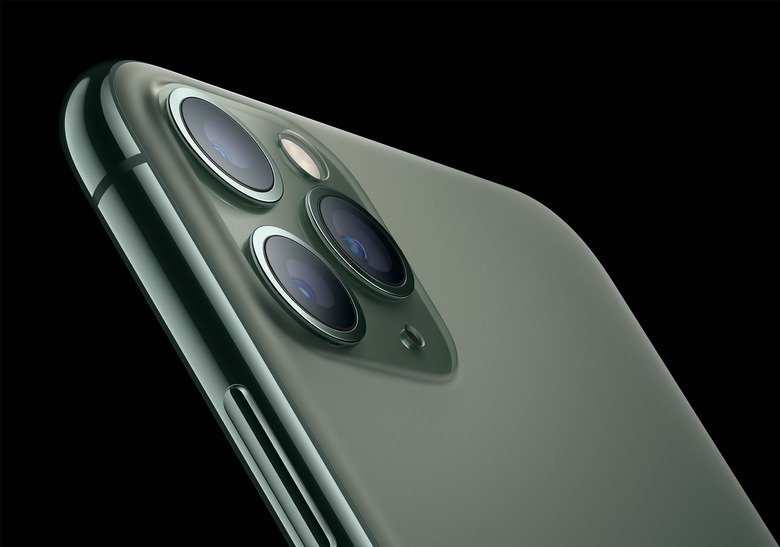Revolutionary iPhone Tech That Took 5 Years To Develop Was Just Abandoned By Apple After Only 4 Years
There's no question whatsoever that 3D Touch is the most underappreciated technologies Apple has introduced in the past decade, but that's no one's fault but Apple's. It's a complex and compelling technology that uses special sensors built into the iPhone's display. These sensors are able to measure the amount of pressure that is applied when someone touches the phone's screen, and then Apple's iOS software can trigger different reactions based on the amount of pressure. For example, lightly tapping an icon on the iPhone's home screen will open the app, but pressing firmly on the icon will open a menu of shortcuts and even a widget.
When Apple develops exciting new technologies like this for its iPhones, the company's rivals typically trip over themselves racing to copy it. But in the case of 3D Touch, no other company managed to pull it off and use it widely. Interestingly though, it might not be that Apple's rivals were unable to copy 3D Touch. It might simply be that they realized this particular technology isn't very useful at all. And now, just 4 years since 3D Touch was first introduced on the iPhone 6s, Apple has come to the same conclusion.
Apple's 3D Touch technology is actually quite brilliant, but it also has some serious problems and the second-largest among is the fact that Apple offers absolutely no indication of where 3D Touch works and where it does not. It's confusing and it's a bummer, but there's an even bigger problem that led to the demise of 3D Touch on the iPhone: It's totally useless.
As I've been saying since Apple first introduced the new tech back in 2015, nearly every 3D Touch feature can easily be replaced with a simple tap-and-hold, or long-press as it's often called. Can you imagine devoting all that time and all those resources into developing a technology that can be replaced with something as simple as a long-press?
When I first made the suggestion, hardcore Apple fans took time out of their busy schedules to email me and tell me I was crazy. Long-presses simply wouldn't offer the same experience, they said. Well, last year Apple released the iPhone XR, which ditched 3D Touch and replaced all of its functionality with... wouldn't you know it... long-presses. And now, in 2019, Apple's entire iPhone 11 lineup has ditched 3D Touch and replaced all of its functionality with... wouldn't you know it... long-presses.
That brings us to a new note sent to clients on Wednesday evening by KGI Securities analyst Ming-Chi Kuo. Kuo's track record obviously speaks for itself, and he claims that one of the three new iPhone models Apple plans to release this coming September will not support 3D Touch. Apple is expected to release a new 5.8-inch iPhone X successor and a larger 6.5-inch OLED iPhone later this year, and then a third new 6.1-inch iPhone model will feature a similar design with a much lower price point.
Apple's move to eliminate 3D Touch from the iPhone 11, iPhone 11 Pro, and iPhone 11 Pro Max doesn't really come as a surprise. The writing was on the wall when the iPhone XR was released without 3D Touch, and rumors in the year since that launch have suggested that none of Apple's 2019 iPhones would feature the tech. That indeed ended up being the case, and anyone with an iPhone 11 model will find that long-presses replace all of 3D Touch's functionality. Of course, the vast majority of those people probably don't even know half of that functionality exists since Apple did such a bad job of communicating all those features to users, but that's a different story.
This morning I received the end product of 5 years of work at Apple. Can't believe I'm really 3D Touching it. :) pic.twitter.com/pHRoEvi1nC
— Avi Cieplinski (@sf_avi) September 25, 2015
The worst part of all this is something that most people were unaware of since it's a tidbit that didn't get much coverage. 3D Touch isn't merely some simple little feature that Apple invented overnight. Instead, if you check out a tweet from an Apple engineer that I referred to back in 2015 when I reviewed the iPhone 6s, it took Apple a whopping 5 years to develop the technology that enables 3D Touch. That means Apple spent 5 years developing a technology that only lasted 4 years on the iPhone. Ouch. At least it's still on the Apple Watch, though it can easily be replaced by long-presses there, as well.
